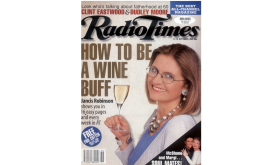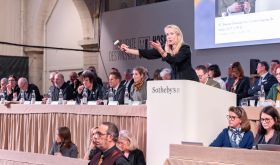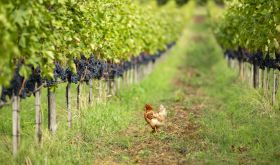See Giuseppe Turi's addendum to this, added 7 Dec.
Screaming Eagle, the incredibly expensive Napa Cabernet, is one of the most talked about yet least frequently tasted wines in the world.
The Sampler in Upper Street, London N1, currently has a bottle of the fully mature 1999 on taste and, at £60 for a 2.5 cl taste, its expected to remain avaiable well into next week.
It is not of course worth this amount of money strictly speaking but it does show that this is a wine with real subtlety – especially since it is being shown alongside a much less impressive bottle of Harlan Estate (a mere £27 a taste).
Other super special wines currently featured in their special tasting cabinets, accessed by individual credit card-like technology, include a rather light DRC Romanée-St-Vivant at £31.46, the fully mature Pétrus 83 at £38.25, utterly as expected, Le Pin 94 at £43.33 and, by far the best value, the sumptuous Beaucastel 1990 at £6.07.
What a fascinating wine shop this is. I really must do something about its only fault, a common one: out of date editions of the Atlas and the Oxford Companion.
See also Harlan and Screaming Eagle and Screaming Eagle – the new regime.
London restaurateur Giuseppe Turi of Enoteca Turi in Putney sent me the following thoughts a few weeks ago. They seem appropriate to append here. (Although I have to add that the tasting sample size at The Sampler is big enough for two tastes, so I tried to share mine with other tasters.
Is wine worth £116 a gulp?
This credit crunch has come as a wake-up call, which seems to happen every so often:we can remember the share collapse of the late eighties and the dotcom bubble of the mid nineties.Though not related, they have one thing in common:the notion that we would be missing out unless we were part of the hype telling us what we must embrace:shares in the eighties, a new technological dream in the nineties and big low interest loans of the new millennium.In each case, when everything collapsed, we were left wondering why we had suspended our better judgement.Is our perception of reality so unreliable?Are we really so gullible?
I sometimes feel the same way when tasting or drinking high-end wines.Where is the worth?The so-called blue chip French wines of Bordeaux and Burgundy have reached dizzyingly high prices(Chateau Ausone 2005 now sells at £23,729 ex vat per case of 12,£2,325 a bottle retail, and assuming a bottle is 20 mouthfuls, it would set you back £116 a gulp!)Chateau Pétrus and Le Pin sell at £34,000+ ex vat per case/... you can do the maths.In 20 years time, when these wines are expected to reach their best, I wonder where the pleasure will be?In the taste?In the rarity?In the knowledge that it is an experience only a privileged few can afford ?Or in the fact that you are drinking hundreds of pounds a mouthful?I will never know the answers to these questions, and to be honest, I don’t care to find out.Are these wines heading for the same collapse?If by some perverse circumstance, these high priced wines were all available on the market at the same time, there would not be enough buyers and the price would plummet.I just wonder:would the wine taste different?
I do believe, though, that there is a realistic value for wines – the good, the fine and the great.To make great wines is an expensive business , and there are several complex contributing factors: the soil, grape variety, microclimate, and an obsessive mind that understands all this and battles each year to achieve perfection.Today, we can comfortably say that never has there been so much great wine being produced in the world; this is precisely because that combination of factors is not exclusive to Bordeaux and Burgundy.Not only is this the case, but the gap between good wine and great wine has narrowed. Italy, Spain, the New World, and increasingly eastern European countries are producing fantastic wines that fetch from £10 -£200 a bottle, giving satisfaction at every level.
Being a restaurateur has given me the opportunity of drinking great, hugely expensive bottles of wine, as well as great wines which cost a tenth of the price.I cannot say that I enjoyed the dearer ones more.Enjoyment of a wine is a personal thing and is dictated by the way one responds to its complex make up: aromatics, acidity, tannins and body structure.This will dictate the enjoyment of any wine and the failure to understand this will colour one’s perception.
The worth of a wine has been my obsession since starting the wine list at Enoteca Turi.Tasting wines throughout the year, I ask myself: for the price, how much pleasure does this wine give and how many people are likely to enjoy this style of wine?The Italian wine industry has reached a maturity not yet recognised by the public at large, and the huge investments in the vineyard and the cellar over the last 40 years are now paying off.From north to south there are a variety of styles of wine which satisfy at all price levels.From Primitivo or Nero d’Avola of Southern Italy (£8 -£15 retail) or Chiantis such as Fontodi /Querciabella (£15-£20 retail), to the Supertuscan Tignanello, Paleo or Sassicaia (£30-£150 retail)or great Piedmontese Barolo and Barbaresco (£30-£150 retail), there is a reassuringly more comprehensive and coherent price structure than ever before.
But then again, are the top end wines really worth the prices they fetch?Yes, if wine means that much to you.The important thing to me when buying an expensive wine, is that the enjoyment I experience from that bottle is unlikely to be found in a cheaper wine.
Giuseppe Turi20 Oct 2008
Enoteca TuriRestaurant28 Putney High StreetLondon SW15 1SQ0208 785 4449













